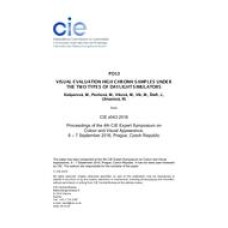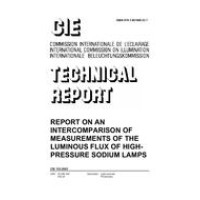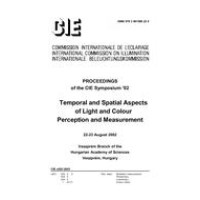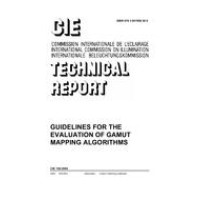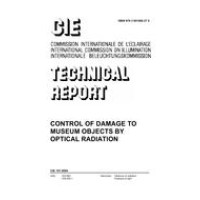Nowadays it is a trend to use high chromacitycolours. These colours are using in many applications such as: warning clothes, fashion design and decorative cosmetics. Many companies were focusing on these colours due to high market potential. Therefore, it is important to study these colours and small differences between these colours. In many cases, the light sources change in LED light source due to it having the ecological and economical aspect. These changes bring lots of problems; discrimination of small colour differences is one among the problems. International Commission on Illumination (CIE) defined a space called CIELAB, which isn't visual uniform. Based on the previous studies, the data for development and testing of new colour difference formulas and colour spaces are limited in chroma. In this work, we were using high chroma dataset for testing and prediction the performance of known colour difference formulas. For testing, we used grey scale and source emitted daylight simulator (D65) and full spectral LED light source. This work has been compared with visual colour difference form observers and calculated colour difference from spectrophotometer. From this study, we made a data set of yellow-green region with high chomacity. Observer was comparingthese data set under D65 and VLED light source. The data set was compared with spectrophotometer data. Present research is to evaluate the prediction ability for different colour-difference formulas in high chroma, particularly yellow-green region of CIELAB colour space. Various colour-difference formulae, such as CIELAB, CMC, and CIE94, have been developed in order to facilitate the determination of instrumental tolerances and the measurement of colour difference. These formulae have been developed by analysing the results from visual experiments that have been employed in a variety of techniques for determining the colour differences which based on acceptability or perceptibility. Nevertheless, such optimization is limited to the chroma value from the previous studies on visual experiments. Based on these results, centre of high chroma yellow-green colour is used as starting point of wide visual experiment related to high Chroma colours. The grey-scale comparison method was used to determine the colour tolerances for high chroma yellow-green colour canter in the hue, chroma, and lightness directions in CIELAB colour space. The performance of the visual differences and of the calculated colour difference of three colour-difference formulas of CIELAB, CMC, CIE94 are calculated by: Standardized residual sum of square (STRESS), performance factor(PF), correlation coefficient (COQ) and a number of wrong decisions (WDC).
 PDF
PDF
All of our standards document are available in PDF (Portable Document Format), an electronic, downloadable format.You will be able to download the file in your account downloads.
 Multi-User Access
Multi-User Access
After purchasing, you have the ability to assign each license to a specific user.
 Printable
Printable
At any time, you are permitted to make printed copies for your and your members' reference use.
 PDF
PDF
 Multi-User Access
Multi-User Access
 Printable
Printable

